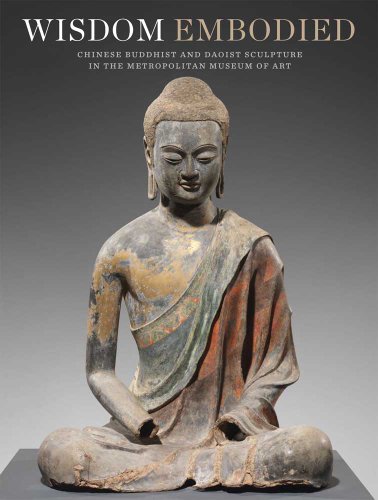

Most ebook files are in PDF format, so you can easily read them using various software such as Foxit Reader or directly on the Google Chrome browser.
Some ebook files are released by publishers in other formats such as .awz, .mobi, .epub, .fb2, etc. You may need to install specific software to read these formats on mobile/PC, such as Calibre.
Please read the tutorial at this link: https://ebookbell.com/faq
We offer FREE conversion to the popular formats you request; however, this may take some time. Therefore, right after payment, please email us, and we will try to provide the service as quickly as possible.
For some exceptional file formats or broken links (if any), please refrain from opening any disputes. Instead, email us first, and we will try to assist within a maximum of 6 hours.
EbookBell Team

4.1
90 reviewsThe Metropolitan Museum’s collection of Chinese Buddhist and Daoist sculpture is the largest in the Western world. In this lavish, comprehensive volume, archaeological discoveries and scientific testing and analysis serve as the basis for a reassessment of 120 works ranging in date from the fourth to the twentieth century, many of them previously unpublished and all of them newly and beautifully photographed. An introductory essay provides an indispensable overview of Buddhist practices and iconography—acquainting us with the panoply of past, present, and future Buddhas, bodhisattvas, monks and arhats, guardians and adepts, pilgrims and immortals—and explores the fascinating dialogue between Indian and Chinese culture that underlies the transmission of Buddhism into China.
In addition to detailed individual discussions of fifty masterpieces—a heterogeneous group including portable shrines carved in wood, elegant bronze icons, monumental stone representations, colorful glazed-ceramic figures, and more—the catalogue presents a ground-breaking survey of the methods used in crafting the sculptures. A second introductory essay and several technical appendices address the question of how early Chinese bronzes, as opposed to those from Gandhara and other westerly regions, were cast; the construction methods used for wood sculptures in China, notably different from those used in Japan; the complex layers of color and gilding on works in all media and their possible significance; and the role of consecratory deposits in wood and metal sculptures. A final appendix publishes the results of an intensive study of the wood material in the collection, classifying every sculpture by the genus of its wood and including a section of photomicrographs of each wood sample—an invaluable resource for researchers continuing to study works of this genre.
As illuminating for new enthusiasts of Chinese Buddhist art as for scholars and connoisseurs, Wisdom Embodied is a glorious tour of the Metropolitan’s unparalleled collection, certain to earn its place as a classic in the field.